Time has deteriorated the organ and now it urgently needs to be restored.
For instants, there are deformed and broken pipes due to his own weight, that had to be removed from the organ and placed in horitzontal position.
For instants, there are deformed and broken pipes due to his own weight, that had to be removed from the organ and placed in horitzontal position.
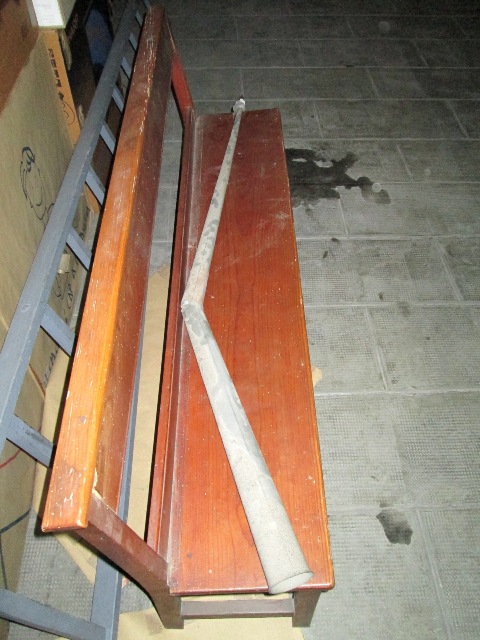
On the left, you can see a Trumpet pipe that has been deformed and finally broken. Pipes of that stop, with high lead content, are placed horitzontally in the organ (“en chamade” position).
The longest pipes of this stop (the lower notes) have been deformed by their own weight and they need to be restored.
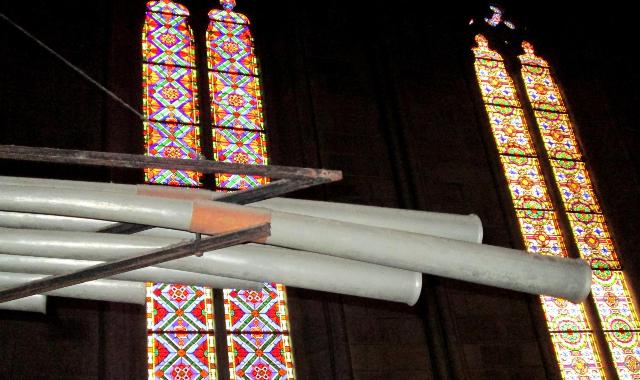
 Deformed Pipes in horitzontal position
Deformed Pipes in horitzontal position

The longest Cromorne pipes, in upright position, have also been deformed. There are deformed pipes that lean on other pipes, what changes substantially their sound.
Here you can hear the Cromorne.
It should sound as a chromatic ascending scale without any pauses (C ~ g3) (!):
As you can hear, this stop is useless, what complicates playing because thus there is a lack of playable reed stops in the lower keyboard (Chair positive).
Here you can hear the Cromorne.
It should sound as a chromatic ascending scale without any pauses (C ~ g3) (!):
Cromorne 8'
Problems with audio? Click here and download or play directly the MP3 file
As you can hear, this stop is useless, what complicates playing because thus there is a lack of playable reed stops in the lower keyboard (Chair positive).
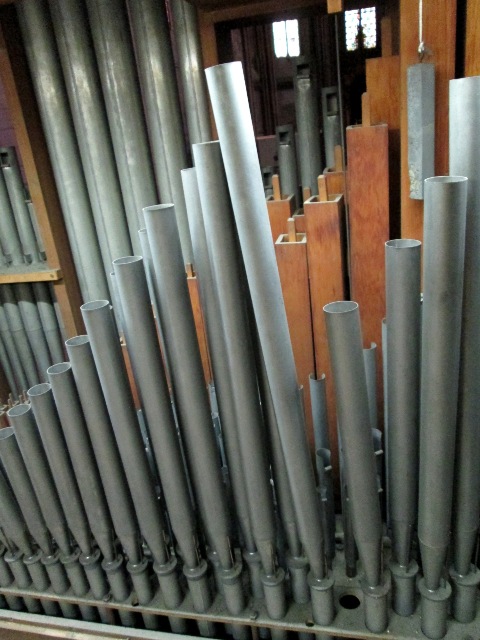
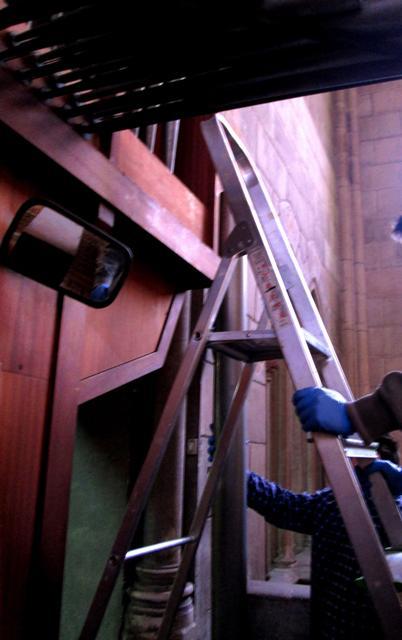
One of the biggest pipes of the Open Diapason, placed in the façade, had to be removed due to the falling risk there was.
You can see how it had collapsed due to its own weight, as the pipe toe is completely deformed.
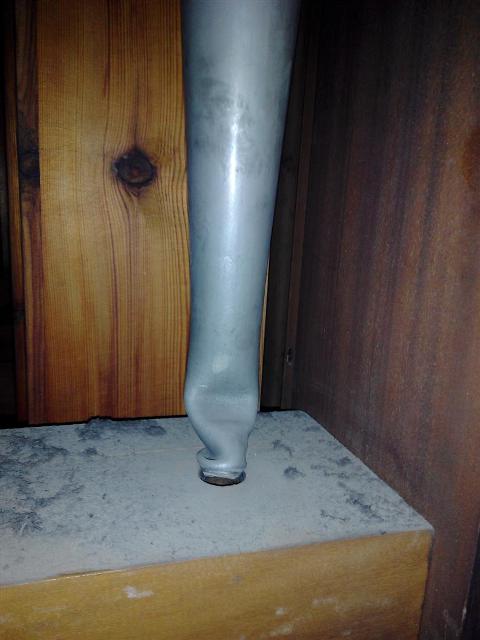
 Collapsed Open Diapason pipe
Collapsed Open Diapason pipe

Moreover, the organ accumulates dust, what reduces the amount of wind blown into the pipes and changes substantially its tuning, volume and sound attack.
The organ needs to be cleaned from dust, what affects the whole pipework but specially those pipes of Bourdon 16'. The organ mechanics and pneumathics also need a thorough cleaning.
Here you can hear the Bourdon 16'. It is a chromatic ascending scale (C ~ Fa3 a lower octave) (!):
Here you can hear the Bourdon 16'. It is a chromatic ascending scale (C ~ Fa3 a lower octave) (!):
Bourdon 16'
Problems with audio? Click here and download or play directly the MP3 file
As you can see, the lowest stop of the organ is practically inaudible, it suffocates. That is a great limitation because the lower pedal notes of the organ are basic whether for accompaniment or soloist repertoire.
These are the main goals for the Restoration Project:
These are the main goals for the Restoration Project:
| 1 | Cleaning all the inner parts of the organs with vacuum cleaners, brushes and other special tools, being careful with all the mechanic elements located in the working place inside the organ. |
| 2 | Cleaning all the pipework (there are 1,011 pipes!). Caps, lips, ears, mouths, toes of the pipes... will be also be controlled in order to achieve a good quality sound. In relation to reed pipes (2 in total), the cleaning process of this kind of pipes is more delicated and slower. Apart from cleaning the resonator, you must separate the shallot, the wooden wedge, the tongue and the boot. |
| 3 | Strengthening the Open Diapason heaviest pipes in the façade. |
| 4 | In relation to the longest horitzontal pipes, about 5 or 6 should be thicker for improving its strength. These pipes can be reinforced with zinc sheets inside, and that is not an expensive solution. |
Watch here the report that Barcelona TV did about the Sponsorship Campaign on August 25th, 2015:
Barcelona TV channel report on Aug 25th, 2015
Problems with video? Click here and download or play directly the MP4 file
And watch also here the report that Barcelona TV did in 2010 about the Restoration Project:
Barcelona TV channel report on Feb 23th, 2010
Problems with video? Click here and download or play directly the MP4 file




